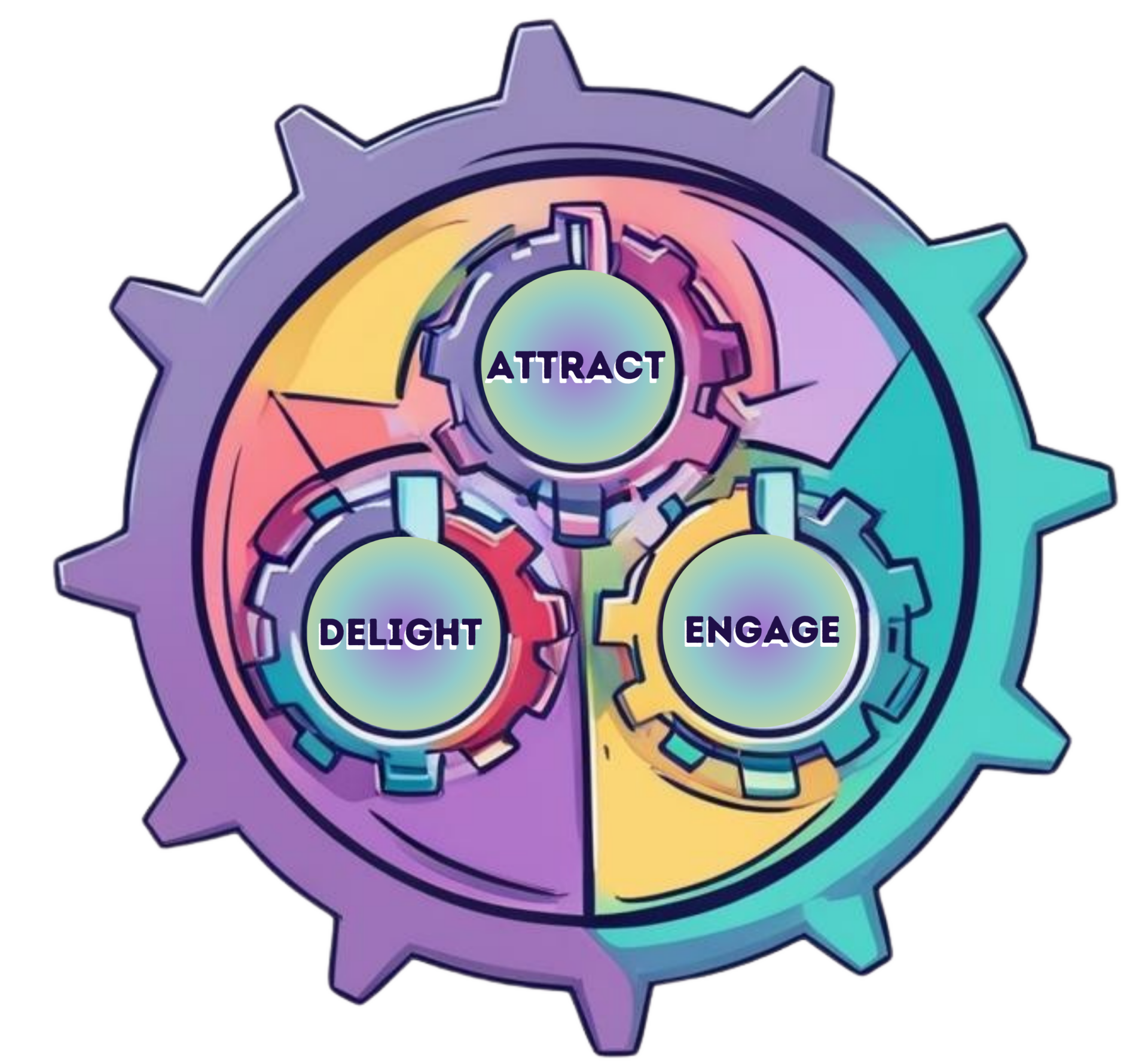Understand the differences between flywheel marketing and the sales funnel—and discover which one is best for your business.
Flywheel marketing vs. sales funnel: which path leads to sustainable growth?
You’ve already mapped out the entire customer journey, fine-tuned touchpoints, invested in content—yet sales are still inconsistent. So the question arises: could the issue lie in the model you’re using?
For a long time, the sales funnel has been the go-to framework for marketing and sales teams. It’s linear, predictable, and easy to measure. But with longer sales cycles, more demanding customers, and increasingly collaborative decision-making, the funnel has started to show its limitations—especially for businesses selling complex solutions.
Enter flywheel marketing: a cyclical model fueled by customer delight and retention as a growth engine. But does it replace the funnel, or can the two coexist?
In this article, we compare both approaches—flywheel marketing vs. the sales funnel—and explain why this debate is gaining traction, particularly among companies with longer sales cycles or high-ticket solutions.
More than just following a trend, what’s at stake is the growth model your company will embrace moving forward.
Sales Funnel — The Classic That Still Works
There’s no denying that the sales funnel is one of the most widely used models in marketing and sales. It organizes the lead journey into well-defined stages—top, middle, and bottom—making it easier to track metrics, forecast results, and define actions for each stage.
It works well, especially when the goal is to attract and convert new customers in a linear, scalable way.
But it has a limitation: what happens after the sale is often left out. And that’s exactly where the funnel starts to lose effectiveness—particularly in long-term relationship contexts, such as high-ticket B2B sales.

Among the benefits of the sales funnel are the ease of measuring metrics at each stage, predictability of results, and standardization of sales actions. However, the linear model can limit visibility into what happens after the sale—a moment when many growth opportunities are lost.
In the article How to Optimize the B2B Sales Funnel, we explain how this model can still be useful to support predictability and conversion—without losing sight of the long term.
Flywheel marketing — customers as the engine of growth
Flywheel marketing shifts the focus. Instead of guiding the customer to an endpoint (the sale), it proposes a continuous cycle of attraction, engagement, and delight.
In this model, the customer doesn’t exit the stage after closing the deal. On the contrary, they become the central piece of the mechanism, influencing new business through testimonials, referrals, and repeat purchases.
This makes a difference when:
- buying decisions take longer;
- the solution requires trust and relationship-building;
- customer acquisition cost needs to be offset throughout the journey.
In the video below, we show how the flywheel model works in practice—with a direct focus on the B2B context and high-value sales markets. It’s worth hitting play to understand why so many companies are transitioning to this approach:
If you’re starting to rethink your marketing and sales structure, this is a great time to talk to WebSnap. We have experience with complex businesses and offer support from model definition to performance-driven execution.
Get in touch with our specialists right now.
Flywheel marketing vs. sales funnel: what really changes?
The difference between the models lies in the growth logic. While the sales funnel focuses on conversion and treats the sale as the endpoint, flywheel marketing values the continuous cycle and places the customer at the center of the strategy, even after the purchase.
See the comparison below:
| Aspect | Sales Funnel | Flywheel Marketing |
| Structure | Linear, with a beginning and an end | Cyclical, with continuous movement |
| Focus | Acquisition of new customers | Retention, loyalty, and referrals |
| Customer Role | End of the journey | Center of the process |
| Energy source | Marketing and sales | Customer experience and integrated team |
| B2B efficiency | It works, but requires reinforcement in post-sale | Gains strength in longer and more consultative cycles |
| Acquisition cost | Higher, as it always depends on new leads | Lower, based on referrals and loyalty |
This perspective clearly explains why the flywheel marketing vs. sales funnel debate has become so relevant—especially in complex markets and those with higher added value.
WebSnap delves deeper into these differences in the article B2B Marketing Methodology: Sales Funnel and Flywheel Marketing, that helps understanding how to adapt the models to your reality.
When is the flywheel more suitable?
It’s not a matter of trend. The flywheel marketing model tends to bring better results in contexts where the customer relationship is essential—especially in consultative sales or those with higher complexity.
Here are some scenarios where the flywheel stands out:
- Long sales cycles, with multiple interactions before the decision
- Recurring business model or frequent upselling
- Strategic post-sale, focused on customer success
- Active content marketing and mature relationship channels
- Customer experience as a competitive differentiator

That’s why many companies are reevaluating their marketing and sales structures. The funnel remains useful, especially for lead acquisition, but the flywheel expands the potential for sustainable growth—a key point in highly competitive markets.
💡 To dive deeper into how this logic works in practice, read the article Flywheel Marketing for Industries.
More than a choice, it’s about integration
The question “flywheel marketing vs. sales funnel: which is better?” may seem like a clash, but in practice, many companies already work with both models integrated.
The sales funnel remains useful for organizing lead acquisition and predicting results in stages.
Flywheel marketing comes into play to keep the customer revolving around the brand, generating new opportunities based on a positive experience.
The key is to adapt the models to your reality—especially if you operate in a B2B market with more complex sales, where retention and relationship make all the difference in the final outcome.
If you’re at this decision-making point, rethinking how to generate healthier and more sustainable growth, talk to WebSnap.
Our specialists can help connect acquisition, retention, and delight with data intelligence, relevant content, and real performance.




